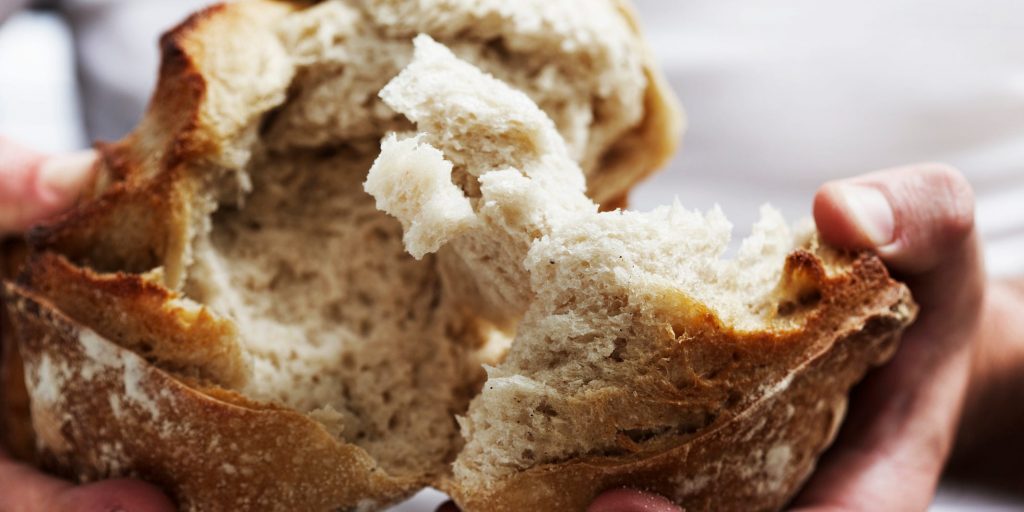- The healthiest kinds of bread are made from whole grains — not refined white flour.
- Sprouted grain bread has a higher concentration of nutrients like iron than whole wheat bread.
- Whole grain sourdough bread is also a great choice because of its relatively low glycemic index.
Bread is a staple food around the world. Yet, despite its widespread popularity, many people limit bread and other carbohydrates when trying to eat a healthier diet or lose weight.
While a low-carb diet may be beneficial for some people, the Dietary Guidelines for Americans recommend that 45% to 65% of your daily calories come from carbohydrates with about half of those made up of whole grains.
Any kind of bread can be part of a healthy diet, but there are some types of bread that offer more nutrients than others, says Jamie Gnau, RD, a clinical instructor of biomedical sciences at Missouri State University.
Here's a look at five of the healthiest bread options according to dietitians and the nutrients they provide.
1. Whole grain bread
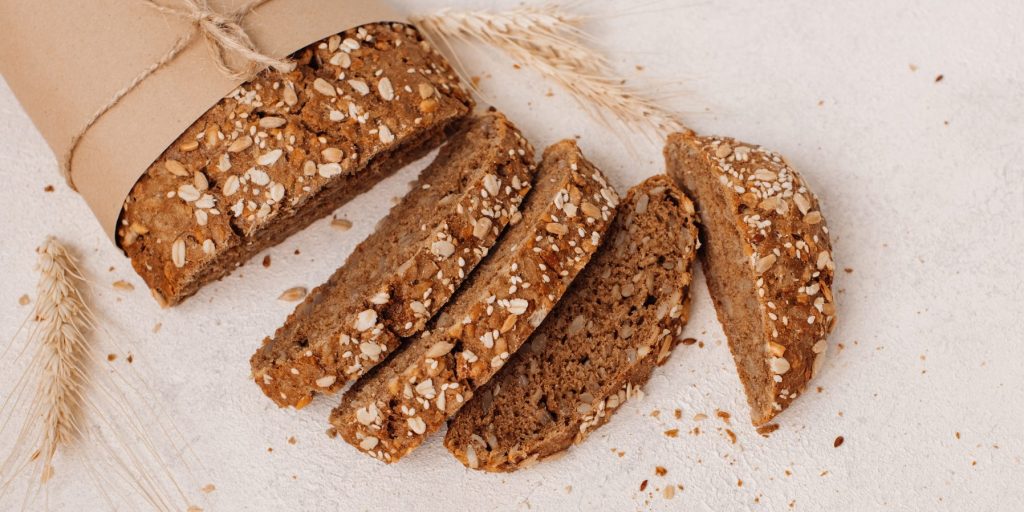
Whole grain bread is made with the whole original kernel of grain. This makes it a much healthier option than white bread, which goes through a refining process that removes the bran and the germ — the two most nutrient-rich parts of the grain.
Unlike white bread, which only contains carbs, proteins, and small amounts of vitamins, whole grain bread is packed with:
Whole grains also have a high fiber content which can help promote digestive health, keep blood sugars steady, and help with weight management, says Sara K. Riehm, a registered dietitian with Orlando Health.
Also, research on the health benefits of whole grains compared to refined grains shows that consuming whole grains improves heart health and vitamin absorption more than refined grains.
When picking out whole-grain bread in the store, Gnau recommends looking at the ingredient list. "Whole grain" or "whole wheat" should be one of the first ingredients at the top.
One slice (43 grams) of whole wheat bread contains:
- 100 calories
- 5 grams of protein
- 5 grams of fiber
- 20 grams of carbohydrates
2. Rye bread
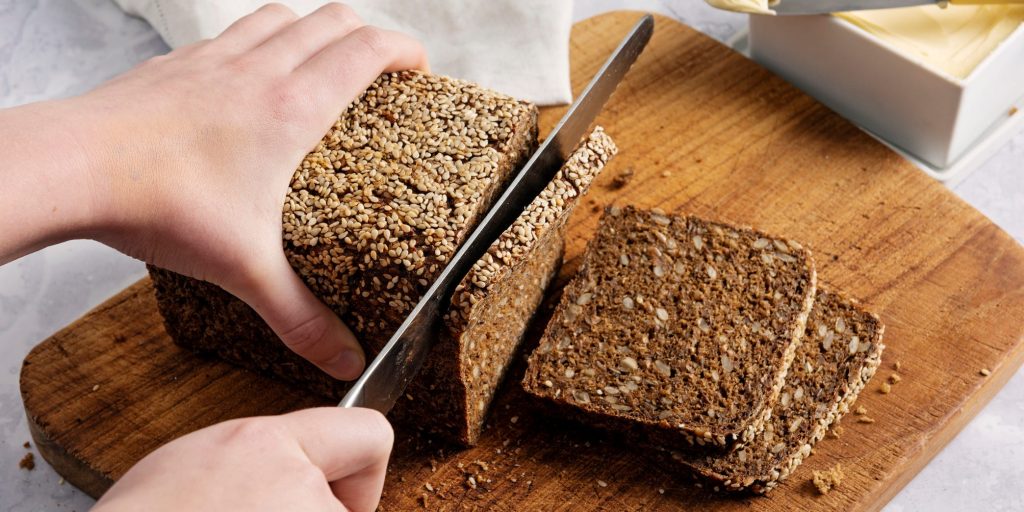
Rye is a type of grain that resembles wheat but is typically darker and denser.
Bread made from rye contains many of the same vitamins and minerals found in whole wheat bread, like fiber, B vitamins, iron, and folate, Riehm says.
Rye's high fiber content can help regulate blood sugar levels and lower the body's insulin response. It may also help you feel fuller longer, which can aid in weight management.
One slice (28 grams) of rye bread contains:
- 60 calories
- 4 grams of protein
- 3 grams of fiber
- 12 grams of carbohydrates
3. Sprouted grain bread
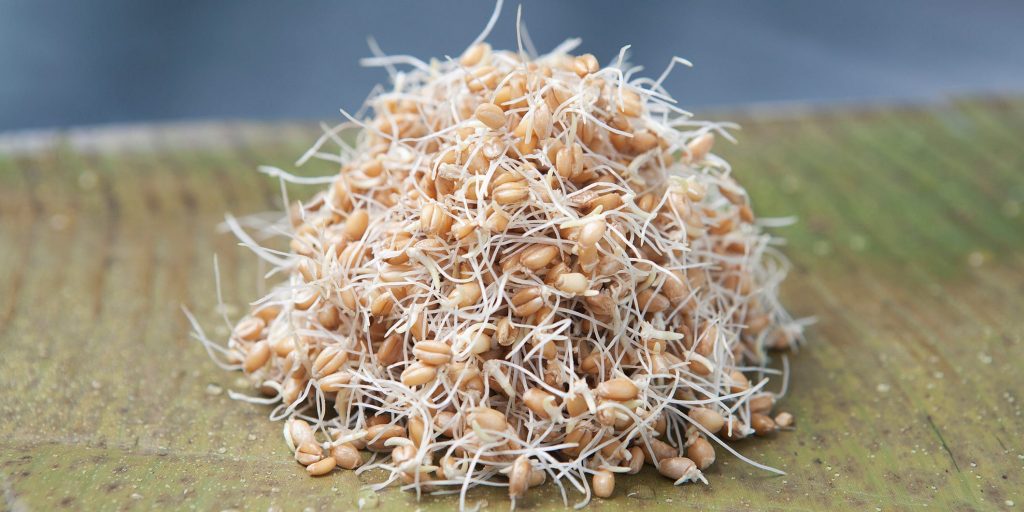
Sprouted grain bread is made from whole grains and legumes that are allowed to sprout before they are processed to make the bread, Riehm says.
The germination process involved in sprouting results in a slightly higher concentration of nutrients than whole grains, though the types of nutrients they contain are relatively the same.
Sprouted grain bread also contains less starch, Gnau says, making it easier to digest, particularly for people who are sensitive to grains.
Nutrients present in sprouted grain bread include:
- Vitamin C
- Folate
- Magnesium
- Iron
- Zinc
- Fiber
- Protein
One slice (34 grams) of sprouted grain bread contains:
- 80 calories
- 5 grams of protein
- 3 grams of fiber
- 15 grams of carbohydrates
4. Whole-grain sourdough bread
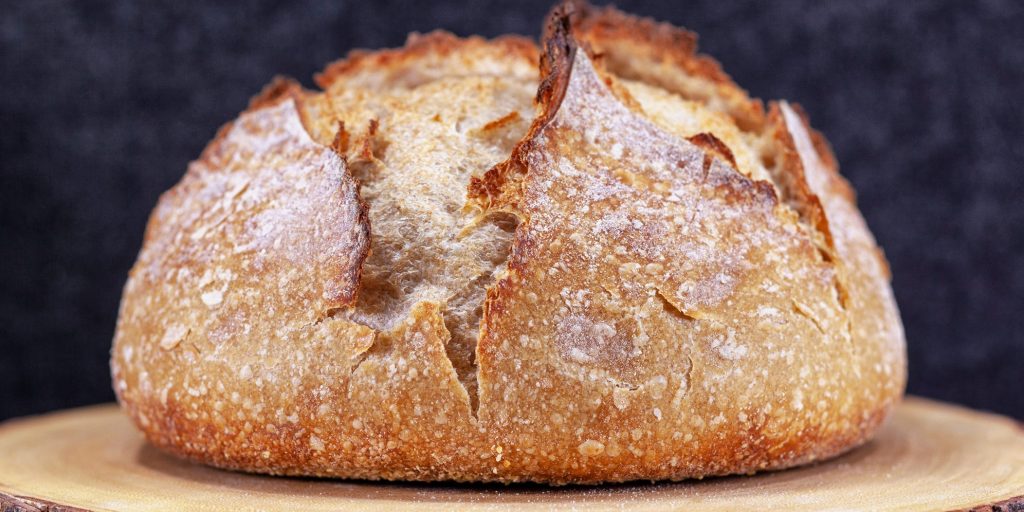
Similar to sprouted grains, whole grain sourdough bread has a slightly higher nutrient content than whole wheat bread and is more easily digested, Gnau says.
Sourdough bread is made through a process called fermentation that involves using yeast and bacteria to make the bread rise. Fermentation reduces the number of phytates that bind to nutrients and impair their absorption, Gnau says. With fewer phytates, the body can better absorb the nutrients present in sourdough bread.
Sourdough bread also has a lower glycemic index than other types of bread, Gnau says. This means sourdough bread is less likely to cause a large blood sugar spike compared to other bread types, like white bread.
One slice (47 grams) of whole wheat sourdough bread contains:
- 120 calories
- 4 grams of protein
- 2 grams of fiber
- 20 grams of carbohydrates
5. Multigrain bread
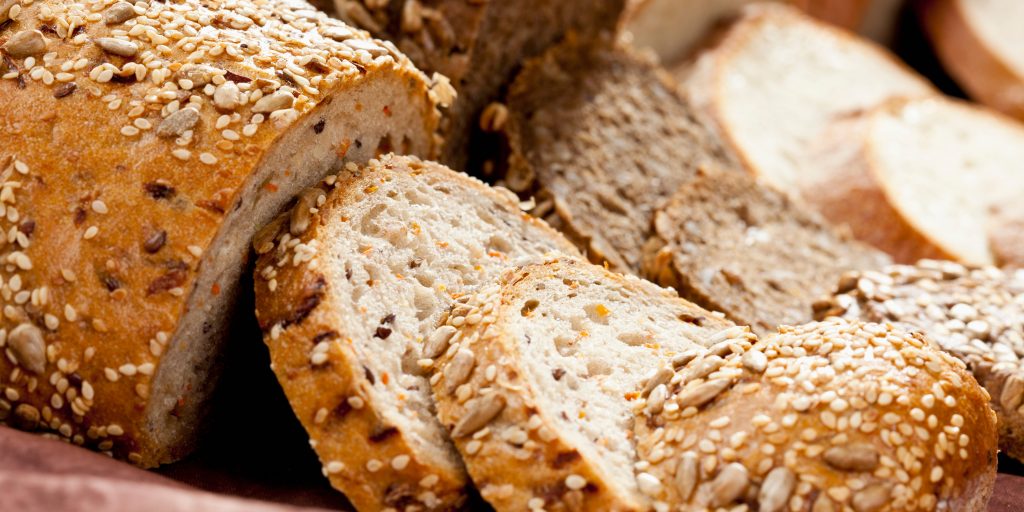
Multigrain bread is as it sounds — bread made with multiple types of grains. This can include whole wheat, refined wheat, barley, flax, or oats.
Multigrain bread is often a more nutritious choice than white bread as it is likely to contain more fiber, Riehm says, but keep in mind that multigrain does not necessarily mean whole grain.
Some of the grains in multigrain bread may be refined and stripped of their naturally occurring nutrients, like fiber and B vitamins.
The exact nutritional composition of multigrain bread can differ based on the brand, so check the nutrition label before buying to make sure it has what you're looking for.
In general, one slice (43 grams) of a typical multigrain loaf you may find in a grocery store contains:
- 120 calories
- 5 grams of protein
- 2 grams of fiber
- 22 grams of carbohydrates
Insider's takeaway
Bread contains carbohydrates, which is an essential nutrient our bodies need. Any type of bread can be part of a healthy diet, but there are some that contain more healthy carbs and nutrients than others.
Whole grain bread contains all parts of the original kernel of grain, including nutrients like B vitamins, fiber, and potassium. This makes it a more nutritious choice than refined or white bread.
Other types of nutrient-dense bread include:
- Rye bread
- Sprouted grain bread
- Whole wheat sourdough bread
- Multigrain bread
If you want to incorporate healthier types of bread in your diet, review labels and ingredient lists in the grocery store. Look for "whole grains" or "whole wheat" listed as one of the first ingredients.
